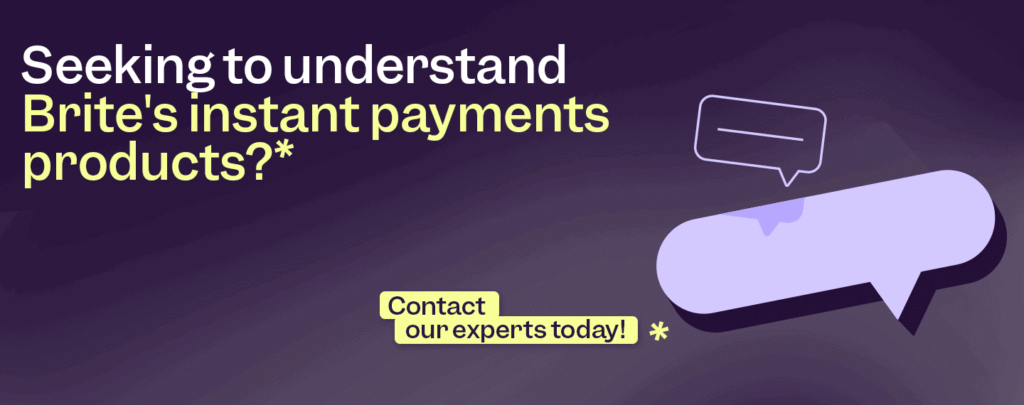
The insurance industry is entering a period of rapid change. Consumer expectations are shifting, new competitors are emerging, and the pressure to deliver value and convenience has never been greater. As Adam Richardson, Head of Motor, Commercial Risk (UK) at AON, puts it:
“Insurers are fighting a lot harder to retain clients compared to 12 months ago, focusing on retaining their held book of business whilst trying to continue to meet their growth plans.”
In this climate, payments can no longer be treated as an afterthought. How customers pay – or get paid – directly impacts loyalty, trust, and cost efficiency. Legacy methods like cards, invoices, and even wallets like PayPal add friction and expense, while instant payments and open banking deliver faster, safer, and more seamless experiences.
Below, we’ll explore six key benefits of instant payments for insurers – and why they’re becoming a crucial differentiator in a highly competitive market.
1. Lower risk and better security for insurers
Risk assessment has always been at the heart of the insurance business, but it’s not just about underwriting policies. The payment process itself can create risks – especially when it comes to fraud, missed payments, or verifying the identity of policyholders.
For insurers, knowing exactly who their clients are and how reliable their payment sources will be is critical to reducing exposure and maintaining trust. This is where instant payments, such as instant account-to-account (A2A) payments, and open banking can provide a significant advantage.
Through providers like Brite Payments, insurers can access reliable real-time data. Insurers can verify a customer’s name and IBAN instantly, reducing the risk of fraudulent accounts. Extended Account Information Services (AIS) can also be leveraged to gain deeper insight into a policyholder’s financial background, such as account history, transaction activity, and even current balance.
With these insights, insurers can:
- Confirm account validity before approving invoice-based premium payments
- Strengthen fraud detection, reducing exposure to fake or high-risk accounts
- Use transaction and balance data to generate a Risk Report that supports faster, more secure payment decisions
In practice, insurers can offer flexible payment options like instalment plans or deferred payments with greater confidence, knowing they have a clearer picture of the customer’s financial reliability. The result is lower payment risk, stronger fraud protection, and a more secure foundation for insurer and policyholder.
2. Meet customer demands with more ways to pay
Today’s policyholders expect the same payment flexibility from insurers that they experience in retail, travel, or e-commerce. From credit cards to BNPL (buy now, pay later) schemes, customers want to choose how and when they pay. This creates both an opportunity and a challenge for insurers: offering more choice without driving up costs or complexity.
This is where technologies such as A2A payments that use open banking can make a real difference. By promoting A2A at checkout, often referred to as Pay by Bank, insurers can encourage customers to pay directly from their bank accounts, reducing reliance on expensive and high-risk payment methods.
Unlike cards or BNPL, A2A payments:
- Cut fees and operational costs: BNPL refunds can reach as high as 50%, creating costly admin work, while card chargebacks bring added expense and risk. A2A payments bypass these issues.
- Offer a direct, low-friction option: Customers pay straight from their bank accounts, with no need for card details or third-party credit approval.
- Match customer expectations across Europe: A2A payments are gaining rapid adoption in Germany and other European markets (indeed, 99% of all payments made via Brite in Germany are settled via SEPA and completed within seconds), making them increasingly familiar and trusted by consumers.
For insurers, it’s a win-win: customers get the payment flexibility they want, while insurers benefit from lower costs, less friction, and more reliable cash flow.
3. Drive down payment costs in insurance with open banking
Payment preferences vary across markets, but options such as PayPal and invoice-based payments remain dominant in countries like Germany.
However, these methods are also some of the most expensive for insurers and merchants to process: high transaction fees, refund handling, and chargeback risks can all eat into margins – especially in an industry where cost efficiency is essential.
Insurers can significantly reduce these costs by shifting a greater share of payments to A2A via open banking and instant payments. Encouraging policyholders to pay directly from their bank accounts avoids the high fees associated with card networks and streamlines internal operations.
With solutions like Brite Payments, insurers can also benefit from direct bank payments, which eliminate the need for costly refund processing and reduce back-office workload. In addition, Brite’s built-in risk assessment tools provide identity verification and account validation at a fraction of the cost of traditional card network providers.
For insurers, this shift isn’t just about trimming expenses – it’s about building a more efficient, scalable payment model that supports long-term growth while keeping customers satisfied.
4. Smoother payment journeys for policyholders
For insurers, every extra step in the payment process can mean lost conversions or frustrated customers. Policyholders expect fast, simple ways to pay premiums or receive claim payouts – and if the process feels slow or cumbersome, satisfaction drops.
With open banking and instant payments, insurers can remove these pain points and deliver a frictionless experience:
- Instant access to funds: When claims are approved, payouts can be sent immediately. There is no waiting, no delays, just happy customers.
- Less operational work: Insurers can generate payment links or QR codes via Brite’s API, making it easy for customers to pay later without manual processing.
- No more manual IBAN entry: Customers don’t need to type in long account numbers – payments are initiated securely and seamlessly.
The result is a faster, smoother payment journey that aims to improve conversion rates, strengthen trust, and keep policyholders engaged.
5. Fast, flexible payments keep policyholders loyal
Customer loyalty in insurance doesn’t end at the point of purchase: it’s sustained through every interaction, including payments.
Flexible, convenient options like payment links for monthly instalments are already common in lending and can be just as powerful in insurance. Sending a link via SMS or email makes it simple for policyholders to stay on top of their payments without hassle.
With Instant Payments and open banking, insurers can retain customers post-purchase by making recurring payments effortless and sustaining a high-quality user experience throughout the customer journey – from onboarding to claims. The easier payments feel, the more likely policyholders are to stay loyal.
6. Create seamless payment experiences for insurance customers
In a competitive market, even small improvements in the payment experience can make a big difference. Traditional bank transfers often require policyholders to enter long card numbers or IBANs – an error-prone and frustrating step that can cause drop-offs.
Brite’s instant payments can help insurers by removing this friction:
- No manual data entry: Customers can complete payments securely without typing in lengthy details.
- Simple, intuitive flows: Help streamline the process, making it as effortless as possible.
The result is a seamless payment experience that improves conversion rates and strengthens customer satisfaction.
Use case: Billecta
A good real-world example comes from Billecta, a payments and invoicing provider. Its previous AISP was too unreliable, leaving customers unable to complete recurring mandates and frustrating those trying to make regular charity donations.
With Brite’s open banking data solutions, Billecta streamlined recurring payments, eliminated friction for end users, and ensured issues were resolved quickly, delivering the seamless experience its customers expected.
Read the Billecta Case Study here
The future of instant payments in insurance
In the insurance and financial services sectors, the adoption of instant payments and open banking is no longer just a nice-to-have: it’s becoming a competitive differentiator. As customers increasingly expect speed, flexibility, and convenience, insurers that embrace real-time A2A payments will stand out in a crowded market.
Looking ahead, we can expect:
- Broad adoption across Europe and beyond, as A2A payments gain trust and popularity
- Deeper integration with claims and policy management, enabling fully automated, end-to-end payment journeys
- Smarter risk and fraud management, leveraging real-time account insights to make secure, informed decisions
For insurers, the future is clear: payments are no longer just a transaction – they’re a strategic tool to reduce costs, enhance customer experience, and drive loyalty. Those who act now will be best positioned to meet evolving customer expectations and thrive in an increasingly digital, competitive insurance landscape.
Conclusion
If you would like to find out more information about instant payments or open banking data services that can enhance your business’s offering, then check out our financial services page. Or if you would like to learn more directly about how Brite can help your business today, then get in touch with one of our payments experts.

